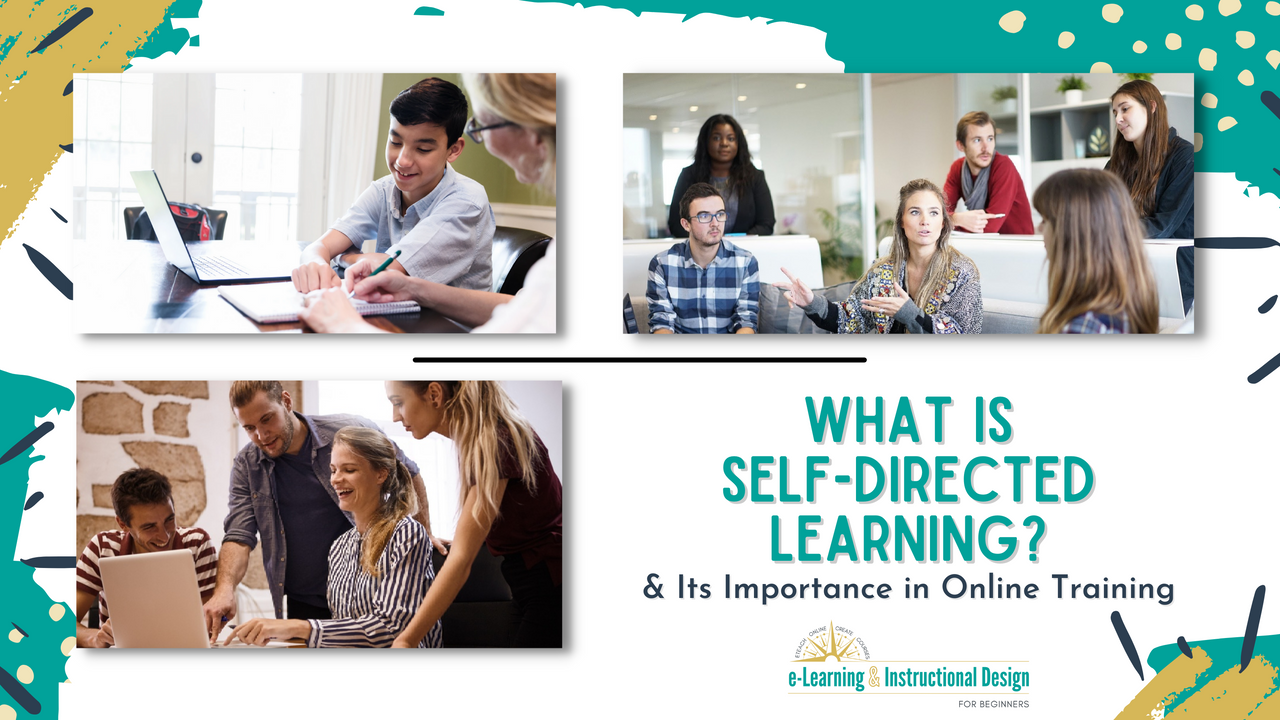
Adult learners are generally self-directed.
We don't typically want to be spoon-fed; we want to be our boss. We want to set our own goals, control our tasks, and accomplish them at our own pace. In other words, the decision to learn or not to learn is also ours. That's when Self Directed learning comes in.- The trend of SDL in eLearning is increasingly on the rise. Research states that learning is becoming progressively self-directed, accessible, and informal.
- In the "new normal" workplace, most employees/workers are in work from home setup. This setup makes training even more challenging to organize and implement in the workplace. That's why L&D professionals, eLearning developers, course creators, and instructional designers want to promote this strategy at the workplace because it facilitates the creation of a robust and sustainable learning culture in the organization.
According to research, the future of eLearning predicts “more user-autonomy” and “fewer mandated learning paths,” allowing for “more integrated, searchable, cataloged systems.”
SDL is an essential trend in advancing the online learning environment due to its unique characteristics in separating physical and social experiences.
This post will define Self Directed Learning and its importance, share some tips on how it's used in eLearning courses, specifically online training, and provide best practices in getting started with SDL in instructional design.
What is Self-Directed Learning (SDL)?
Self-directed learning - a process in which students take the initiative to diagnose their learning needs, formulate learning goals, identify resources for learning, select and implement learning strategies, and evaluate learning outcomes.
SDL includes knowing what you need to learn, how to learn it, and being able to judge if you’ve learnt it. It assumes that learners have a role in selecting those learning tasks that fit their learning needs. (Loyens, Magda, & Rikers, 2008).
In a corporate environment, self-directed learning often involves giving learners, employees, partners, or customers access to webinars, videos, slideshows, or policy and procedure documents on specific topics through a learning management system (LMS).
Why is Self-Directed Learning (SDL) Important?
Adult learners are mature, responsible individuals who want to take charge of their own learning. This is a natural psychological and cognitive development as human beings mature intellectually.
SDL GIVES THE FOLLOWING BENEFITS:
- SDL gives adult learners the flexibility to schedule and learns whenever convenient. Adults claim that they learn more effectively when they analyze and internalize knowledge on their own by switching between viewpoints, referring to case studies, and looking up other resources within the virtual space. This will also allow instructional designers to create courses accessible anytime, anywhere, to fit the learners' flexible schedule.
- SDL aligns perfectly with the natural learning style of adult learners who don’t want to be spoon-fed and enjoy studying when it’s most convenient for them. This synchronicity removes resistance and motivates adult learners to seek out the learning. eLearning courses designed for adult learners should include activities that will encourage them. Instructional designers should use varied activities to engage learners to finish the course.
MOTIVATIONAL FACTORS
-
Freedom and Choice
-
Control
-
Interest and Engagement
USE OF PORTFOLIOS
Tips on how eLearning developers, course creators, and Instructional designers can support self-directed learners:
-
Allowing learners to choose their projects
-
Planning eLearning modules in such a way that learners can choose where they want to start
-
Giving learners multiple opportunities to complete tasks
-
Permitting learners to set their deadlines for projects
Self-directed learning is much more than just an approach to adult learning; instead, this is the new way of developing skills in the workplace.
JOIN THE
eLearning and Instructional Design for Beginners Community
- In-depth courses & training
Access my rapidly growing library, attend monthly live training & accountability support groups
- Exclusive tools & members-only discounts
Tools, templates, downloads, checklists and more - plus receive special perks & discounts
- Supportive community & network
Feedback and support from fellow instructional designers, career-driven business owners, and experts who will keep you on track
Get Your Software Toolkit for Instructional Designers
Tools & processes that will help you plan, build, and grow your instructional design career and freelance business.







